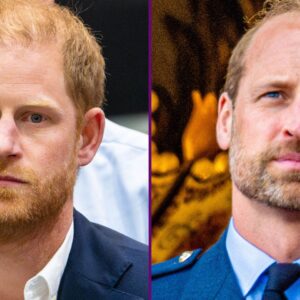
The internet is once again ablaze with controversy surrounding The Rings of Power on Amazon Prime Video, this time focusing on the portrayal of orcs in the early episodes of Season 2.
While Season 2 of The Rings of Power promised to captivate viewers with a grander scale and a deep dive into Sauron’s mind, it certainly did not plan to ignite yet another fan controversy. However, just like in Season 1—where the portrayal of Galadriel and the inclusion of female and non-white dwarves and elves sparked outrage—Season 2 has reignited tensions. This time, the issue at hand revolves around the depiction of female orcs and orc children, which, according to some fans, violates Tolkien’s original mythology. But is that really the case?

Are Female and Child Orcs Breaking Tolkien’s Rules?
Once again, the outcry over “wokeness” and deviations from Tolkien’s source material has emerged. The mere appearance of female orcs has some fans claiming that the show is betraying the core of The Lord of the Rings universe. Similarly, the inclusion of orc children has been met with equally bizarre claims, with some suggesting it’s a nod to political correctness or even an agenda by advocacy groups to vilify men.

Read Rimac Nevera R: Electric Power That Defies Physics
Yet, these types of baseless arguments have been circulating on social media since The Rings of Power first aired. Lauren Chen, a journalist and content creator, even faced a wave of online harassment simply for discussing the possibility of female orcs appearing in the show. One online commenter went as far as predicting that female orcs would be used to “make statements about the patriarchy” or “defeat male heroes to showcase victims rising against oppression.”
Such reactions highlight a deep misunderstanding of Tolkien’s work, as he himself mentioned the existence of female orcs and orc children in his writings.

Tolkien’s Own Words on Orcs
Let’s clarify: Tolkien’s world does indeed include female orcs. In The Hobbit, Bolg, the orc leader, is described as the son of Azog, suggesting a lineage and reproductive system among orcs. This would naturally imply the existence of orc females.

In The Silmarillion, Tolkien is explicit, writing, “For the Orcs had life and multiplied after the manner of the Children of Ilúvatar.” This passage clearly establishes that orcs reproduce just like any other living beings in Middle-earth, meaning there must be male and female orcs.
As for orc children, Tolkien’s writing provides subtler evidence. In The Hobbit, Gollum reveals that he once ate orc meat, including orc children. He recalls a specific incident where he caught a “goblin-imp” (a young orc) just hours before, describing the creature’s cries. Moreover, in a 1963 letter to Mrs. Munby, Tolkien explicitly mentions that there “must be orc-women,” though he adds that we don’t learn much about their lives in the stories, as they rarely appear outside of the armies serving dark lords.
Read Pixel 9 Feature Breakdown: How Does ‘Pixel Screenshots’ Analyze Your Screens?
The Controversy Lacks Foundation

Given this, the presence of female and child orcs in The Rings of Power is entirely in line with Tolkien’s lore. While it’s fair to critique the writing or direction of the series, claiming that these orc depictions betray the original material is simply inaccurate. Even long-standing role-playing games like Dungeons & Dragons have allowed players to create female orc characters for nearly five decades. In video games, from Baldur’s Gate to World of Warcraft, female orcs have been a staple for years.
At the heart of this debate lies ignorance and a fair dose of toxicity. These critics seem unaware—or unwilling to accept—that orcs are as much a part of Tolkien’s world as elves and dwarves. They reproduce through natural means, not by magic or divine intervention.
As Season 2 of The Rings of Power continues, available on Amazon Prime Video, it’s clear that the controversy is more a reflection of modern cultural debates than an accurate understanding of Tolkien’s universe.



